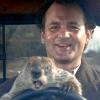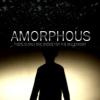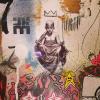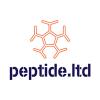As many of you know, I'm a pretty big fan of bright light therapy. I've been using it for years and it helps significantly with attention, mood, and wakefulness for me.
Here's another recent study testing it for Nonseasonal Major Depressive Disorder. https://www.ncbi.nlm...pubmed/27267951
I use this guy at home: http://amzn.to/1YtRsOk
I use this one at work: http://amzn.to/1YtSvxz


J Affect Disord. 2016 May 26;203:1-8. doi: 10.1016/j.jad.2016.05.062. [Epub ahead of print]
A sham-controlled randomized trial of adjunctive light therapy for non-seasonal depression.
Chojnacka M1, Antosik-Wójcińska AZ2, Dominiak M3, Bzinkowska D2, Borzym A3, Sokół-Szawłowska M3, Bodzak-Opolska G3, Antoniak D3, Święcicki Ł2.
Author information
Abstract
BACKGROUND:
The aim of the study was to examine the efficacy and safety of morning bright light therapy (BLT) in the treatment of patients with a current major depressive episode (MDE) in bipolar and unipolar disorder without a seasonal pattern. It was a randomized, sham-controlled trial.
METHODS:
Adults, ages 18-70 years were randomized to treatment either with BLT or a sham negative ion generator (as a placebo control). The subjects were required to be on a stable and therapeutic dose of psychotropic medication for at least 4 weeks prior to enrollment and their treatment had to be insufficiently effective. Their clinical state was monitored at the baseline and at the end of treatment. The Hamilton Depression Rating Scale-21 items (HDRS-21), Montgomery-Asberg Depression Rating Scale (MADRS), Beck Depression Inventory (BDI-II), Clinical Global Impression-Severity (CGI-S) and Patient Global Impression (PGI) were used. The results were analyzed with an intention-to-treat (ITT) analysis.
RESULTS:
Ninety-five patients were enrolled (50 diagnosed with bipolar disorder and 45 with unipolar depression). Fifty-two patients were randomized to treatment with BLT and forty-three were in the placebo group (ITT population). Eighty-three subjects completed the study. There were 12 dropouts (5 in the light group and 7 in the placebo group). After 14 days of treatment, a significant improvement was found in all groups (p<0.001). The subjects treated with BLT did not significantly differ in terms of improvement in HDRS-21 scores at the endpoint when compared to patients treated with placebo (p=0.2). However, further analysis demonstrated significantly higher response (50% v. 27.9%, p=0.02) and remission rates (28.8% v. 11.6%, p=0.04) among patients treated with morning BLT when compared to placebo group. It should be noted that in the population of drug-resistant patients, BLT was more efficacious than placebo. There were no statistically significant differences between unipolar and bipolar disorders (p=0.4).
CONCLUSION:
Although overall improvement in HDRS-21 scores were not superior in the BLT group, both response and remission rates were significantly higher among patients treated with BLT relative to those receiving the sham intervention. BLT was also more efficacious than placebo in the population of patients with drug-resistant depression. Further studies to define the subpopulation of patients with non-seasonal depression who may benefit the most from BLT are needed.
Edited by lostfalco, 06 July 2016 - 03:48 AM.




















































